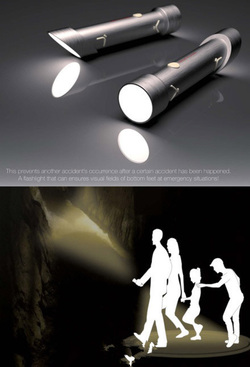 No doubt that once most preppers sit down and build an inventory of survival provides to refill on – a electric lamp is one amongst the primary things thought of. I have created no secret that I actually have a significant electric lamp fetish. I actually have flashlights scattered all of my house and in my cars. there's a electric lamp in every of my youngsters rooms – and that they all have batteries in them and work. The importance of a electric lamp in associate emergency can't be exaggerated. Power out? therefore is your ability to check within the dark. If you're reading this diary – I don't have to be compelled to get into detail why your ought to have many flashlights around. If you're not acquainted with semiconductor diode technology in flashlights – let American state enlighten you. semiconductor diode flashlights have return on means within the past few years. nowadays – they're extraordinarily bright, durable, and therefore the batteries last for much longer than common flashlights of constant brightness. The bulbs last nearly forever that could be a massive and. There ar some terribly nice semiconductor diode flashlights out there at your department of local government store similarly as from several of my sponsors.
LED flashlights ought to be purchased knowing however bright they're. electric lamp brightness is measured in lumen’s. some years agone a semiconductor diode electric lamp was pretty smart to be throwing out 8-10 lumen’s. Today’s high-tech LEDs will simply throw out over a hundred lumen’s – and at pretty affordable costs.
Find Best Choice @MountainManSupply
I am slowly however for sure weakening out “regular” flashlights and exchange them with LEDs. they're simply way superior with the brightness and long battery life. In response to a different recent post I did on flashlights – one reader mentioned concerning the vulnerability of semiconductor diode lights to EMP. I had ne'er thought-about this before. therefore – I did some analysis and here is what I actually have found:
•No one is aware of as expected. till the time comes that there's associate actual EMP attack – opinions on the results of a spread of electrical instrumentality as well as flashlights – ar simply that – opinions.
•Small natural philosophy like AM/Fm radios and semiconductor diode flashlights (both semiconductor diode and regular) aren't established by EMP to a good level to to theirvery short conductors. EMP likes long wires like power lines to capture the EMP.
•LED flashlights are dead once associate EMP attack. There ar people who state that just about any natural philosophy are toast. therefore – let’s hope there's no EMP attack.
Alright – enough concerning flashlights. If you are doing not have a bunch of them with further batteries…….get them. purchase them low cost, purchase them giant, purchase them little – however simply purchase them.
don’t forget the extra batteries.
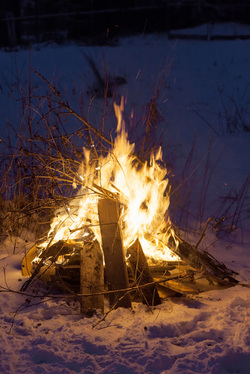 In spite of the best of intentions, during the winter months old Murphy can show up at anytime and throw you into a winter survival situation. Even though properly dressed for the outdoors, in order to survive a cold night you will need to start a fire.
When forced into winter survival mode you might ask yourself, "How would a twenty-first century woodsman start a fire in these conditions?"
Unfortunately, old man winter won’t come running to answer that question. And like thousands of people have found out over the centuries, when it comes to a winter survival situation, you're on your own when starting a fire.
Only planning, practice and advance preparation can get you through the cold and darkness.
This brings us to our next principle of winter survival: Fire is hardest to start when you need it the most.
Almost anyone can start a fire when its ninety degrees outside, the sun is shining and it hasn't rained for a couple of weeks. But, when you're cold, wet, hungry and thirsty, when everything around you is cold and wet, when your fingers are so numb you can barely feel your fingertips and the temperature is headed down; it’s then you discover if your fire making skills are up to the challenge.
Who can forget in the Jack London classic, To Build A Fire, where the main character struggles in vain to get a fire going at seventy-five below zero? Even though the story is considered fiction, it's a worthwhile read to get the proper mindset before you head into the wilderness.
Probably more than any other season of the year, winter survival requires that you develop the necessary self-reliance skills before an emergency arises.
There are many methods of fire starting available to the twenty-first century woodsman. Here is a list of twenty-five fire starting methods any outdoorsman can use.
These should be carried in your winter survival kit and be in your vehicle should you need them. These methods should also be practiced in all kinds of conditions before you need them.
Spark Based Fire
1. Flint and steel
2. Ferrocerrium rod
3. Butane lighter
4. Butane torch
5. Propane torch
Friction Based Fire
1. Bow drill
2. Hand drill
3. Pump drill
4. Rope drill
5. Crutch drill
6. Mouth drill
7. Fire thong hand drill
8. Polynesian fire plow
9. Aboriginal fire saw
10. Four person fire log
Heat Based Fire
1. Fire Piston
2. Magnifying lens (Glass lens, Fresnel lens, balloon, ice)
3. Concave lens or reflector (headlight or flashlight reflector, chocolate bar and soda can)
4. Nine-volt battery and fine steel wool
5. Car/atv/motorcyle/snowmoble etc. battery, wire and tinder
Chemical Based Fire
1. Matches/fire starters (Yes, this is a chemical fire. Most matches depend on a two part chemical reaction with one half of the chemical on the match head and the other half on the box or book of matches. It is not just a strip of sandpaper! Make sure you pack the striker turned away from the match heads so that it won't accidentally ignite or rub off.
Strike anywhere matches have both chemicals on the tip and when it is struck against a rough surface the two combine to ignite. By the way, a match is the perfect fire starter. It has the ignition source and a small piece of tinder attached. Unfortunately, it is a one-time use and you can only carry so many at a time. Plus, they must be kept absolutely moisture free unless they are dipped in wax or paraffin or are already waterproofed from the factory. Still, keep them dry if at all possible!
2. Potassium Permanganate and glycerin ( Hint: Use a couple of drops of water to accelerate the exothermic reaction) Also note that in very cold temperatures this may not work even if you warm up the elements beforehand. Keep them widely separated if at all possible.
(Potassium Permanganate can be found in the water treatment area of hardware stores and pool stores and glycerin can be found in medical supply stores and pharmacies and has many uses for the outdoorsman as a treatment for insect bites, burn or chafing ointment, treatment for poison ivy, sumac or oak rashes, mild bug repellant, lubricant for a bow drill socket and can be mixed with wood ash to make a simple but effective soap! Truly a multi-purpose item!)
3. Emergency Flare (Even sold in half sizes for carrying convenience)
Whenever you go into the great outdoors, you should always carry at least three kinds of methods of starting fire. Usually, these are a butane lighter, a ferrocerrium rod and matches of some kind. But whatever you choose, make sure that you practice in all types of weather and conditions. Go ahead, challenge yourself, start a fire in the woods in the pouring rain with just one match! It can be done, but requires proper preparation and skill.
Proper Planning When the hunter/gatherer's of yesteryear walked through the wilderness, they did not wait until they arrived at their campsite to gather what is probably the most important material for starting a fire, tinder. As they traveled they were on the lookout for cedar bark, dry grasses, cattail fluff, Canadian thistle down and any other small dry materials that might be needed for fire starting.
You should do the same and carry a spare Ziploc bag for these items in your winter survival kit. The woodsmen of yesterday would protect their hearth, cord and spindle from the elements as carefully as we would our matches today. When Otzi the ice man was discovered in the Otztal Alps in the fall of 1991, he had in his hand a cylinder of birch bark with freshly picked maple leaves and grass, insulating what was a live coal from the elements. He also carried in a clever belt pouch, flint and four pieces of true tinder fungus (Fomes fomentarius) with traces of iron pyrites in their fibers. No iron pyrites were found on or around the site of the discovery, so he must have considered his fire carrying skills equal to the task of the mountain wilderness and the 10,400-foot altitude where he died. Note that he died from a shoulder injury caused by an arrow, not because he was unprepared.
Proper Preparation When preparing to build a fire in a winter survival situation, you must gather your materials first. Gather all the tinder and wood that you need before you start to build the fire.
Tinder may be char cloth, SRO's Mini Inferno, cotton balls, dryer lint, cedar bark fluff, jute twine, sock threads (if they are cotton), small sticks of various sizes etc. Note that larger branches and logs do not need to be cut or split, they may easily be burned in half when the fire is going. Remember winter survival is always a calorie game so don't waste time and energy cutting wood to size.
For ideal winter survival one should probably have a small axe or hatchet to split wet wood and get at the dry inner core, a small saw for cutting large pieces down to size in order to be able to drag them to the fire area and a sharp knife with which to make fuzz sticks. (This is accomplished by shaving small curls of wood left attached to the stick.)
The author has found that it is best to gather a small bundle of sticks from pencil size up to thumb size, dry them out and keep them in a Ziploc bag. Do this when it is not raining, lay them up for a week or so and then pack them with your winter survival kit.
Spark Fire With Cotton Balls and Petroleum Jelly
Also for spark-based fire starting it's hard to beat a cotton ball (make sure it is 100 per cent cotton and not a synthetic) mixed with petroleum jelly and stored in a plastic 35mm film canister. Film canisters can still be had for free at many in-store photo labs. (The petroleum jelly on the cotton balls has many multiple uses including lip balm, soothing galled inner thighs, coating for wind-chapped skin, etc.)
Along with these items, by including a few small sticks of fatwood or greasewood, split small and broken in half, a fire may be started in almost any condition.
Start with the cotton ball (just a piece is needed) drawn out and stretched, then lay two small pieces of fatwood on top, crisscrossed, then lay some pencil thick twigs from your Ziploc bag on top in a tepee fashion and using ferrocerium rod or match etc., apply the spark/fire to the cotton ball. Within short order you will have a small blazing fire.
Of course, in a winter survival situation, you must be careful that the ground on which you build your fire is not too wet. If so, then build a platform of sticks (as dry as possible) upon which to place your fire. If you don't do this, the water and steam from the ground will make it nearly impossible to keep your fire going.
When the fire has reached sufficient strength, then even wet wood may be burned. A fire is like a baby, it must be nursed, nurtured and fed from small to large sticks until it can burn on it's own.
Proper Practice As has already been noted, you must plan and prepare for a proper fire. But, you must also practice, practice, practice! Make sure that you truly own the skill before your life and the lives of those you care about depend on it. This is especially true for all the primitive fire starting methods like the widely touted bow drill.
When you try to start a fire with these methods you will soon learn to appreciate modern fire starters a whole lot more. Along with the practice of making fire, you should practice maintaining fire (of the proper size, a big fire takes a lot of wood, you can get closer to a smaller fire and it is more environmentally friendly, always cook on coals not flame etc.) and practice carrying fire.
Carrying fire could be a lifesaver and was practiced to an art in ancient times. Carrying fire was done by Otzi the ice man and is mentioned in the Biblical Book of Genesis where Abraham carried fire from the base of the mountain to the area of sacrifice. This story dates to somewhere around 2000 to 1500 BC!
The last three areas of winter survival and fire starting are these:
1. The Sure Fire No matter where you find yourself, always carry the ability to start a for sure fire. For some this may be a ferrocerrium rod, for others this may be a lighter, a match, a torch or an emergency flare. Just make sure that if conditions are the worst (Cold, wet, hypothermic etc.) that you can get that fire started.
2. The Next Fire Always think or plan ahead. It is easier to keep a fire going in a winter survival situation than it is to start it again. If you use flint and a steel striker, make sure that you prepare your char cloth in this fire for the next fire. Save some tinder, char cloth, jute twine as well. Dry tinder should be used sparingly as it is one of the hardest items to find in winter.
3. The Last Fire No matter how long you are in a winter survival situation, you should try and keep fire-starting materials for that last ditch fire. Keep at least one match, don't use all the butane in your lighter (They are good on average for about fifty fires or so), save some good tinder and so on. Keep your fire going and practice primitive fire starting methods and save your commercial and irreplaceable fire starters. You never know when you might slip into a creek, get caught in a storm or get overheated and sweaty and need to dry out. The last ditch fire may just save your life!
Put together a winter survival kit
Fire starting in a winter survival situation can be difficult at best. So if you find yourself needing the skills, make sure you own the skills. Plan, prepare and practice. Put together a winter survival kit and pay special attention to your fire starting materials. Go out in your back yard and practice making fire, maintaining fire and carrying fire.
And when you're in that winter survival situation, start that sure fire, keep in mind the next fire and keep something back for the last fire. And with a little help from Above, you'll be back with your loved ones, safe and sound and with a great winter survival story to tell! - by James Bender
This is part 3 of a 4 part Winter Survival series. If you haven't had a chance, check out Winter Survival - Part 1 and Winter Survival - Part 2.
When in a winter survival situation, you might soon realize that you’re not going to get out of the situation you’re in before nightfall. This means you will have to spend the night outside and will need a warm and dry place to sleep.
Whether or not you are an experienced outdoorsman, there is one need that everyone has and that is the need to be sheltered from the weather. Which brings us to another core principle of winter survival.
3. If you are to maintain your core temperature and stay dry, you must know how to protect yourself from the elements. As you can see, next to oxygen, shelter is the second highest on the list of priorities. Regardless of why you find yourself in a winter survival situation, you must find a way to provide adequate shelter for yourself and for those who may be with you.
Obviously, the best winter survival shelter is one you don’t have to exert unnecessary energy to build. Such as a cave, a rock shelter, a cabin or trail shelter, even an outhouse built by the forest service are all options that should be considered before expending precious calories to make something in which to shelter.
An ideal winter survival shelter should provide three basic needs:
A. It must shelter you from the wind.
B. It should shelter you from precipitation.
C. It must provide some insulation from the cold.
So, with these in mind, the next main principle of winter survival is this:
4. It's easier to take shelter than to make shelter, or it's easier to take some form of a shelter than to make a whole shelter. If you cannot find a natural or man-made shelter in which to spend the night in or wait out a coming storm, you must make one. If you are new to self-reliance you may think that a tent is an ideal way to take shelter with you, but very few people are going to bring a tent along with them everywhere they go. And even if you have a tent, it only provides two of the three basic needs. It will shelter you from wind and precipitation but provides little if any insulation from the cold and you cannot have a fire close enough to feel the heat without endangering the fabric of the tent.
Normally, a tent is used in conjunction with a sleeping bag of the proper temperature rating for the environment it is to be used in. The sleeping bag is what provides insulation from the cold. But, if you have a tent and a winter rated sleeping bag, it's not winter survival -- you're just camping! The real question is what do you do when you find yourself needing warmth and shelter that is not readily available?
The best shelter to take and make is the composite lean-to shelter. It consists of very small, lightweight, and portable components carried in a small winter survival kit that can be placed in a pocket or pack when needed.
When in a winter survival situation, you can build the composite shelter one of two ways, either in a lean-to or an A-frame style shelter. The typical lean-to shelter is not an adequate winter survival shelter because it is open to the elements of wind and rain on three sides and is not insulated. The typical A-frame/tent style shelter does a better job at shedding water and shielding from the wind but is still open on the two ends and doesn't allow as much exposure to your fire and is not well insulated. The composite lean-to shelter uses the same configuration as a standard lean-to with an insulated top and sides and partially blocked front. To build an insulated lean-to shelter you will need the following items.
If using a mylar survival blanket it can be unfolded and used as is. When using a drum liner/garbage bags they must be slit with a knife along the two long sides and duck taped together lengthwise. The advantage of mylar for winter survival is that it reflects heat back to your body from your body and from the fire.
The advantage of the garbage bag is that it can be used as a poncho, to gather debris for insulation, a makeshift hobo pack sack or stuffed with leaves as a ground mat. A heavy-duty garbage bag is truly a multi-purpose survival item. The best idea is to have two garbage bags and one mylar survival blanket as well, but this is winter survival and you have to choose what to bring, as you can't carry everything.
Insulating Your Shelter
To insulate your shelter, pile leaves and debris on top of the sheeting (being sure not to puncture it) to a depth of six to eight inches. To keep the debris from blowing away, pile several branches on top of the debris. Next, cut small poles of the proper length to match the grade on the sides of the lean-to. Sharpen the bottom of the poles and drive them into the ground on the sides of your shelter approximately six to eight inches apart.
Then, do the same to the front of the shelter from one end to approximately two thirds of the way across. Weave small flexible limbs in and out of the poles on both the sides and the front of the shelter making a loose mat. If you can find them, pine branches work best for weaving. Pile debris against the sides and lay sticks on it to keep the debris from blowing away.
The front should not have debris piled against it as this is toward your fire and you don't want to create a dangerous situation for yourself by piling a giant tinder bundle in front of your shelter. Try to make the front weave as tight as you can, using green pine branches if possible. On the inside of your shelter, pile leaves and debris or small pine branches several inches thick to lie on. Now after your fire is built you can crawl in and enjoy!
Constructing An A-Frame Shelter
The A-frame composite shelter is built much the same way except that it doesn't need two trees to start with. To build an A-frame shelter you will need two heavy sticks approximately four feet tall lashed together at the top and spread apart to form an "X" and one long ridgepole approximately eight to ten feet long set in the top of the "X" and placed at an angle to the ground and lashed to the two front poles. Then, more poles are laid along the ridge vertically from top to bottom on both sides.
Lay the mylar/plastic sheeting across the top of the ridge, wrap a smooth stone (Or a bobber) in each corner, tie around it with cord and stretch it to the ground and tie it to a wooden peg. The bobbers are uniform and smooth keep the plastic/mylar corners from ripping. (You can use smooth pebbles or stones instead of bobbers but they never seem to be around when you need them.)
Then begin to pile debris to a depth of six or eight inches starting at the bottom and going the top again taking care not to puncture the sheeting. Lay branches on the top to keep the debris from shifting or blowing away. Pile debris on the floor to the proper thickness for a sleeping mat and slide in feet first and get comfortable.
Important Shelter Tips
Note: In either shelter you should add to the debris on the floor every day or replace it as it will definitely crush down from laying on it and will begin to lose some of its insulating properties. Make sure that your shelter is not in an area that could flood (look for flood litter height in the bushes and trees around you), make sure it's not underneath any large, dead branches that could fall on you; called “widowmakers,” and ideally it should be about halfway up a slope as the top of a ridge is windy and the bottom of a gully is where cold air condenses and settles. Dig a shallow trench around your shelter to divert water and place your fire a safe but "feelable" distance from the front of it. Make sure to stop and make camp at least two hours before dusk, as you should be able to make the composite shelter in this amount of time.
You may never find yourself in a winter survival situation, but if you do, it's good to take the basic materials to make a proper shelter. Sure, many people can make shelter without a knife, cord or sheeting, but the author believes that a little preparation goes a long way! After all, when you get a shelter built and a warm mat to sleep on with a blazing fire out front, it's not winter survival any more. Now, you're camping! - by James Bender
First let me explain what a Bug-Out-Bag (B.O.B.) is. There are many different takes on what this bag is for, but the idea is having a backpack that is pre packed with everything that you would need to survive for at least 3 days in a situation of displacement. Without getting into some of the more extreme ideas about what kind of situation could provoke "bugging out", let me cover some of the more common. In my own family life, living in the mountains meant living with the threat of forest fires. We faced several "recommended evacuations" and stayed home, however, we did face a "mandatory evaluation" and my entire family, wife and 5 children, were completely displaced for several days. At the time, I didn't have any idea of a "bugging out" concept, but that was a real eye opener for me. Of course, any natural disaster could provoke a serious displacement of people, are you ready for that, or will you just be another victim, waiting for the government to come help you? Some people have several bags, stashed in their garage or somewhere, ready to grab and go. That is the idea. READY TO GRAB AND GO -or- BUG OUT! Don't forget to build one for your pet if you plan on taking them with you... What should be in a B.O.B.? Here are some thoughts: - Clean change of warm clothing for everyone. - Calorie dense foods, with long shelf life. - Portable stove and fuel. - Water filtration system, and water storage. - Prescribed Medications. - A tarp for shelter, and some emergency blankets. - A survival knife and survival tool (both, so you always have a backup knife) - Ammunition (assuming you have a gun, and will grab it on the way out) - Fire starters (have several different kinds) - Flashlights - Binoculars, or a Monocular - Paracord (great for a bunch of things) - First Aid Kit - Hygiene Kit (don't forget the ladies) - Cash (preferably small bills) There are many other thoughts on what to carry in your bag, or bags, but ultimately it is up to you to determine what you will need. But for goodness sake, don't wait until you need one to build one, it will be too late then.
 We don't like to think about the possibilities, and that is why so many people fail to prepare. But failing to prepare, is preparing to fail.
Zig Zigler said "Expect the best. Prepare for the worst. Capitalize on what comes."
We don't want to think about the possible dangers, for fear of being "Johnny Raincloud", but if we don't consider the obvious dangers, we won't be survival minded.
There are many threats at the doorstep of America these days. Threats from radical terrorists bent on our destruction, serious government mismanagement, natural disasters, disease, drought, etc, etc....
Consider Katrina, Fukashima, 9/11, and the U.S. financial market crash in 2008.
Sometimes it seems like the perfect storm is brewing. So are we to ignore those things, and not prepare, when people are relying on us for their care?
Some don't want to be one of those "doomsday preppers", some think it is a lack of faith and trust in the Lord, and some are just too busy to think about it.
Those are convenient concerns when everything is going well. But around the world, people have experienced major catastrophes on may levels, are we to think that America is exempt from the reach of crisis?
That is the kind of thinking that will sort out those who thrive, those who survive, those who become victims, and those who die, when disaster comes.
If it comes your way, will you just survive, or thrive?
See More Post from : http://www.mountainmansupply.com/blogs/news
|

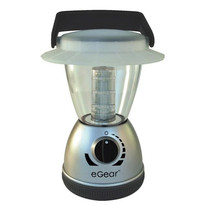
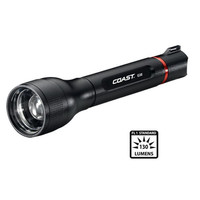
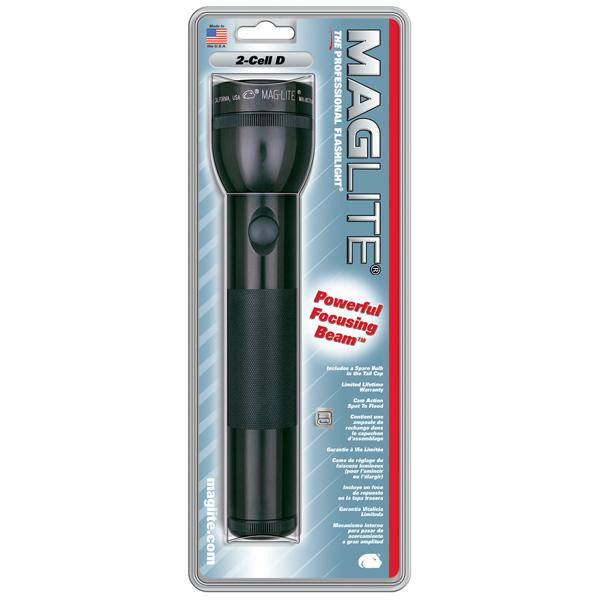

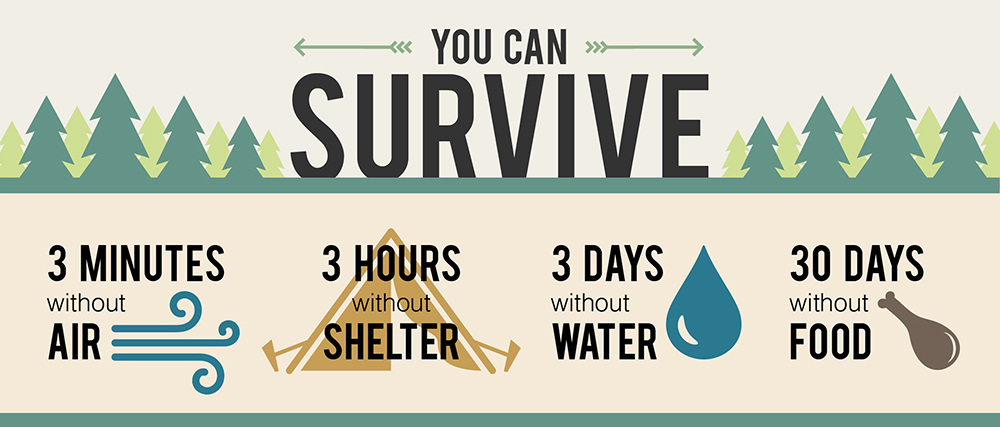
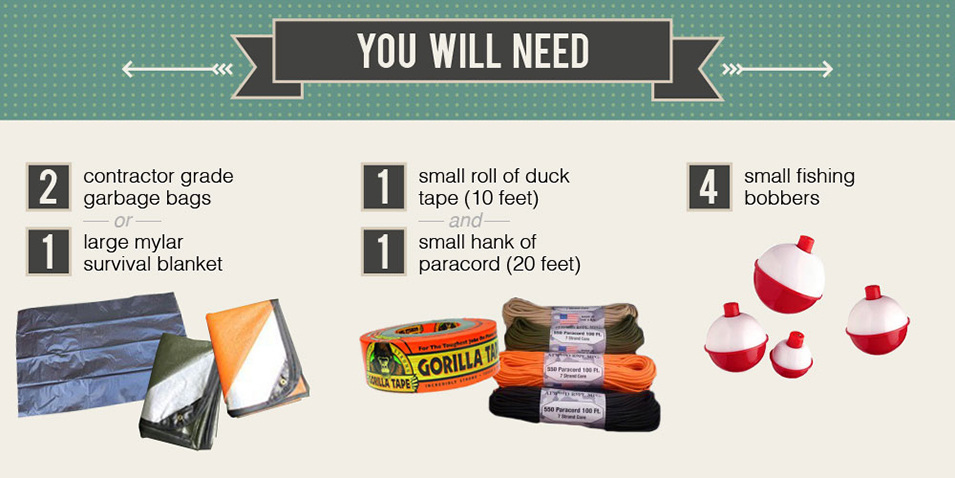
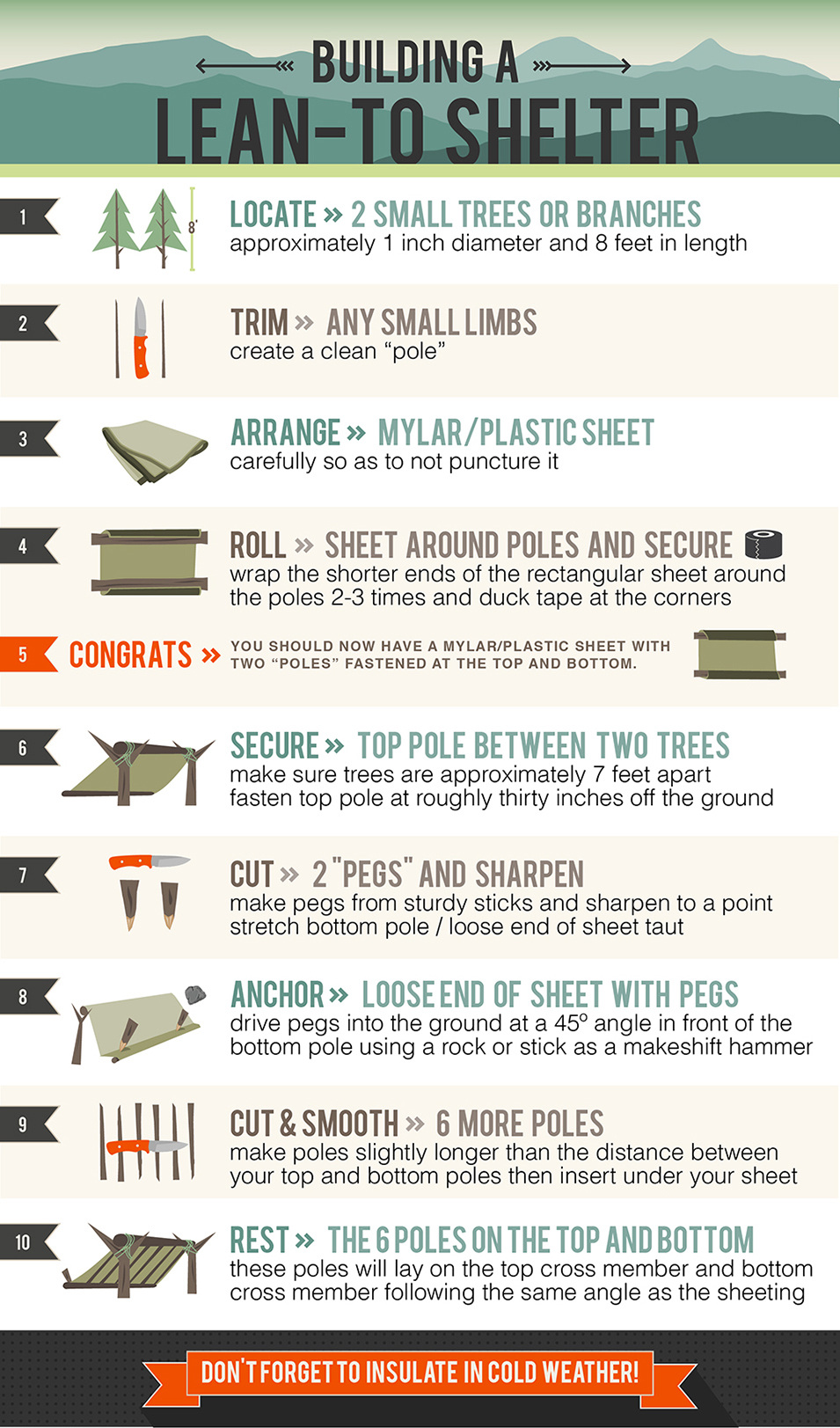


 RSS Feed
RSS Feed